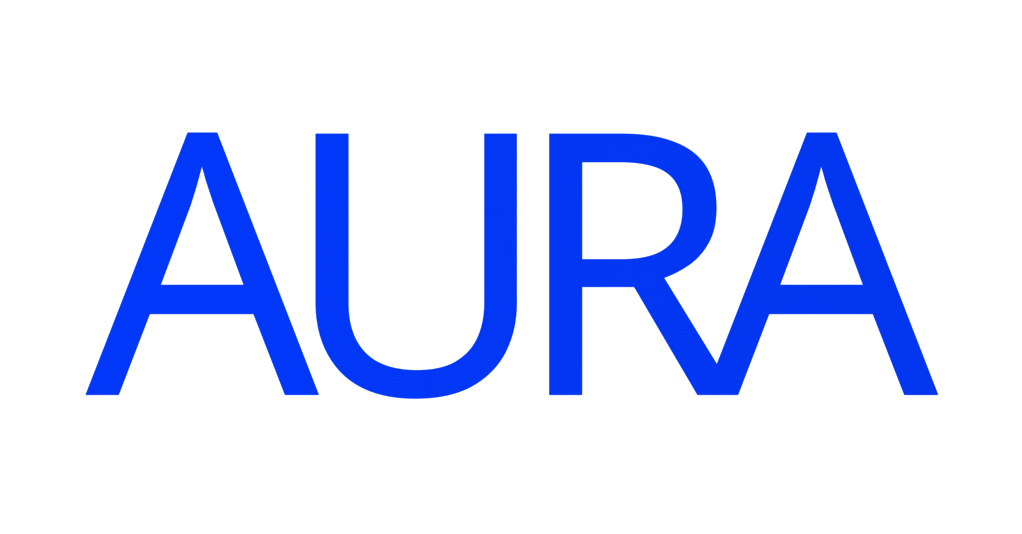Medical device quality assurance
Medical device quality assurance
Our quality assurance experts offer knowledge and training to guarantee that your medical devices comply with regulatory standards within the market.

Market requirements
Market requirements
United States
Medical devices sold in the U.S. market must be safe and effective. The FDA requires that manufacturers follow Good Manufacturing Practices based on Quality System Regulation (QSR: 21 CFR Part 820) and its associated regulations. Domestic and foreign medical device manufacturers must put in place a quality system that addresses the design, manufacture, packaging, labeling, storage, installation, and servicing with the appropriate records for finished medical devices sold in the U.S. Our experts have the knowledge and expertise to help make your system compliant with U.S. requirements. Required quality system elements include:
- Document control
- Design control
- Risk management
- Validation
- CAPA management
- Complaint handling
- Labeling, including Unique Device Identification (UDI)
Quality System Regulation (QSR)
- Does your quality system meet the requirements? We can help you develop a plan to assess the gaps and then eliminate them.
Create a Quality System to meet QSR
- Do you have the resources to create a compliant quality system? We can create and establish a quality system to meet your organization’s needs.
Create/review Device Master Records (DMR) and Device History Records (DHR)
- These records are required to meet QSR requirements that all processes required to manufacture the product are listed in the DMR and the DHR. We can assist you with an independent review of these records.
Europe
Medical devices sold in international markets must be safe and effective. Most countries, require a manufacturer to have a quality system certified to the latest ISO 13485 standard as well as specific requirements for the country. The quality system must address the device’s design, manufacture, packaging, labeling, storage, installation, and servicing, with the appropriate records for finished medical devices marketed in the country. Our experts have the knowledge and expertise to help make your system compliant with a country’s requirements. Required quality system elements include:
- Document control
- Design control
- Risk management
- Validation
- CAPA management
- Complaint handling
CE Mark Approval
Are you interested in marketing your medical device to the European Economic Association (EEA)? The EEA, which consists of the countries in the European Union plus other mutually recognized countries, requires your technical documentation to be reviewed and accepted by first a Notified Body and then a competent authority (CA). This device-specific requirement is in addition to having your quality system certified to the latest ISO 13485 standard.
The CE Mark can be obtained once your technical file or design dossier (dependent on risk) is accepted by the competent authority. Do you have the resources to compile the technical documentation in an acceptable format? Aura Health d.o.o. has been compiling and reviewing technical files and design dossiers for more than five years, including the latest requirements for Clinical Evaluation Reports (CERs).
Summary Technical Documentations (STED)
Countries other than the United States and the EU may require the submission of a different file of technical documentation. This file of technical documentation is usually referred to as Summary Technical Documentation or STED. As with CE Mark Approval documents, Aura Health d.o.o. has created STED files for various clients interested in marketing their medical devices outside the United States or the EU.
Device Licenses
Your organization is seeking to develop a market for your medical device in a specific country. Do you know whether you would need an agent, a sponsor, a distributor, or a license to do so? We have assisted clients with navigating this requirement in many international markets.
United States
Medical devices sold in the U.S. market must be safe and effective. The FDA requires that manufacturers follow Good Manufacturing Practices based on Quality System Regulation (QSR: 21 CFR Part 820) and its associated regulations. Domestic and foreign medical device manufacturers must put in place a quality system that addresses the design, manufacture, packaging, labeling, storage, installation, and servicing with the appropriate records for finished medical devices sold in the U.S. Our experts have the knowledge and expertise to help make your system compliant with U.S. requirements. Required quality system elements include:
- Document control
- Design control
- Risk management
- Validation
- CAPA management
- Complaint handling
- Labeling, including Unique Device Identification (UDI)
Quality System Regulation (QSR)
- Does your quality system meet the requirements? We can help you develop a plan to assess the gaps and then eliminate them.
Create a Quality System to meet QSR
- Do you have the resources to create a compliant quality system? We can create and establish a quality system to meet your organization’s needs.
Create/review Device Master Records (DMR) and Device History Records (DHR)
- These records are required to meet QSR requirements that all processes required to manufacture the product are listed in the DMR and the DHR. We can assist you with an independent review of these records.
Europe
Medical devices sold in international markets must be safe and effective. Most countries, require a manufacturer to have a quality system certified to the latest ISO 13485 standard as well as specific requirements for the country. The quality system must address the device’s design, manufacture, packaging, labeling, storage, installation, and servicing, with the appropriate records for finished medical devices marketed in the country. Our experts have the knowledge and expertise to help make your system compliant with a country’s requirements. Required quality system elements include:
- Document control
- Design control
- Risk management
- Validation
- CAPA management
- Complaint handling
CE Mark Approval
Are you interested in marketing your medical device in the European Economic Association (EEA)? The EEA, which consists of the countries in the European Union plus other mutually recognized countries, requires your technical documentation to be reviewed and accepted by first a Notified Body and then a competent authority (CA). This device-specific requirement is in addition to having your quality system certified to the latest ISO 13485 standard.
The CE Mark can be obtained once your technical file or design dossier (dependent on risk) is accepted by the competent authority. Do you have the resources to compile the technical documentation in an acceptable format? Aura Health d.o.o. has been compiling and reviewing technical files and design dossiers for more than five years, including the latest requirements for Clinical Evaluation Reports (CERs).
Summary Technical Documentations (STED)
Countries other than the United States and the EU may require the submission of a different file of technical documentation. This file of technical documentation is usually referred to as Summary Technical Documentation or STED. As with CE Mark Approval documents, Aura Health d.o.o. has created STED files for various clients interested in marketing their medical devices outside the United States or the EU.
Device Licenses
Your organization is seeking to develop a market for your medical device in a specific country. Do you know whether you would need an agent, a sponsor, a distributor, or a license to do so? We have assisted clients with navigating this requirement in many international markets.
A quality system that complies with QSR standards listed in 21 CFR Part 820 must be implemented by manufacturers who hold or possess a PMA or 510k, according to US legislation. In order to comply with the QSR and related regulations’ criteria, we can assist you in developing a quality system or modifying your current one.
Manufacturers must globally certify their quality system to the current ISO 13485 standard and related standards. To comply with ISO 13485’s requirements, we may assist you in developing or modifying a quality system.

Training
Training
We offer on-site quality assurance training so that your staff members can engage with one other and ask questions while they are learning.
- Document control
- Design control
- Risk management
- Validation
- CAPA
- Complaint system
- cGMP (current Good Manufacturing Practices)
- Auditing
- FDA inspection preparation


Design controls
Design controls
FDA and Notified Bodies require proof of compliance with established design control procedures during the product design and development phase. Medical device manufacturers need to maintain records known as Design History Files (DHFs) documenting compliance with established design control procedures, and to have them ready for regulatory inspection once they obtain market authorization for their medical device. Our experts can show you how to properly create and maintain a DHF to ensure more efficient quality assurance down the line.
- Design History File (DHF) reviews and remediation
- Implementation of design control process
- Facilitation of design review meetings
- Create/review ISO 14971-compliant Risk Management Files (RMFs)
QA for medical software and mobile apps
Medical device software offers its own unique risks and challenges. For years, the FDA has enforced strict requirements for software design and validation, above and beyond the requirements for medical device hardware. Now, medical device manufacturers are being tested by new international requirements, a dizzying array of mobile platforms, and the coming wave of cybersecurity threats. Our experts have spent years validating software applications for medical device manufacturers and are well-equipped to address the newest challenges.
- Create procedures for your device Software Development Life Cycle (SDLC) and quality software validation, in compliance with the latest requirements from FDA guidances and IEC 62304
- Ensure effective and efficient communications between software developers and top management as software is being written and tested
- Plan and execute software validations that ensure compliance and withstand scrutiny during FDA inspections and Notified Body audits
- Help your team incorporate cybersecurity and multi-platform considerations into every phase of software development, from user requirements to design and coding, all the way through to user site testing
QA audits and assesments
Gap Assessment
We will assess either EU, FDA regulations, or international standards. Examples of these assessments include:
- 21 CFR Part 820
- ISO 13485:2016 Medical devices – Quality management systems – Requirements for regulatory purposes
- Medical Device Single Audit Program (MDSAP)
- EN ISO 14971:2019 Medical Devices – Application of risk management to medical devices
Audits
Once a quality system is in place, manufacturers must conduct routine audits to ensure their system is compliant and effective. Without regular monitoring, there may be a reduction in product quality or a lack of process improvement, resulting in either a possible loss of third-party certification or FDA enforcement actions. Our experts can assess your compliance and prepare you for FDA inspections and notified body audits to keep you in compliance.
- Perform mock FDA inspections to assess QSR compliance, including mock Pre-Approval Inspections (PAIs) for PMA submissions
- Perform supplier audits, reducing your internal cost by outsourcing this requirement
- Perform internal audits, reducing your internal cost by outsourcing this requirement
Problem Resolution
Medical device manufacturers are required to comply with FDA regulations regarding how device issues are recorded and resolved. Our experts have worked with the FDA and can help accomplish everything from creating a complaint process to resolving an FDA warning letter.
- Assist in creating complaint processes, including FDA medical device reporting (MDR) to comply with 21 CFR Part 803, and improving complaint investigations
- Management of recalls in accordance with 21 CFR Part 806
- Assist in creating processes for vigilance reporting (VR) for CE-marked devices
- Improve conforming product processes
- Improve document control systems, including compliance with 21 CFR Part 11 for electronic signatures and electronic record-keeping
- Improve CAPA processes, which are among the most common sources of FDA 483s
- Resolve FDA 483s and warning letters with quality system updates
- Resolve notified body ISO 13485 audit observations
Supplier Management
Suppliers are an integral part of all manufacturing processes, but for medical device companies, FDA’s QSR makes choosing and monitoring suppliers a challenge. Our experts can help with the entire process, from selection to monitoring and contractual agreements. Let our experts make sure your products are made to meet compliance standards.
Technical documentation QA
Medical device manufacturers must navigate obstacles to demonstrate conformity assessment, which is an important part of quality assurance requirements. Technical file formats vary, but there are key parts and requirements that must be met to avoid violating compliance standards. Our experts have the knowledge and experience to make sure you are fully compliant.
- Create/review risk management plans
- Create/review risk management files (DFMEA, PFMEA, FMEA)
- Create/review essential requirements (ER) checklists, – which are required for the CE Mark
- Create/review technical files for class IIa and IIb medical devices in the EEA
- Create/review design dossiers for class III medical devices in the EEA
Design Controls
FDA requires proof of compliance with established design control procedures during the product design and development phase. Medical device manufacturers need to maintain records known as Design History Files (DHFs) documenting compliance with established design control procedures and to have them ready for regulatory inspection once they obtain market authorization for their medical device. Our experts can show you how to properly create and maintain a DHF to ensure more efficient quality assurance down the line.
- Design History File (DHF) reviews and remediation
- Implementation of design control process
- Facilitation of design review meetings
QA for medical software and mobile apps
Medical device software offers its own unique risks and challenges. For years, the FDA has enforced strict requirements for software design and validation, above and beyond the requirements for medical device hardware. Now, medical device manufacturers are being tested by new international requirements, a dizzying array of mobile platforms, and the coming wave of cybersecurity threats. Our experts have spent years validating software applications for medical device manufacturers and are well-equipped to address the newest challenges.
- Create procedures for your device Software Development Life Cycle (SDLC) and quality software validation, in compliance with the latest requirements from FDA guidances and IEC 62304
- Ensure effective and efficient communications between software developers and top management as software is being written and tested
- Plan and execute software validations that ensure compliance and withstand scrutiny during FDA inspections and Notified Body audits
- Help your team incorporate cybersecurity and multi-platform considerations into every phase of software development, from user requirements to design and coding, all the way through to user site testing
QA audits and assesments
Gap Assessment
We will assess either EU, FDA regulations, or international standards. Examples of these assessments include:
- 21 CFR Part 820
- ISO 13485:2016 Medical devices – Quality management systems – Requirements for regulatory purposes
- Medical Device Single Audit Program (MDSAP)
- EN ISO 14971:2019 Medical Devices – Application of risk management to medical devices
Audits
Once a quality system is in place, manufacturers must conduct routine audits to ensure their system is compliant and effective. Without regular monitoring, there may be a reduction in product quality or a lack of process improvement, resulting in either a possible loss of third-party certification or FDA enforcement actions. Our experts can assess your compliance and prepare you for FDA inspections and notified body audits to keep you in compliance.
- Perform mock FDA inspections to assess QSR compliance, including mock Pre-Approval Inspections (PAIs) for PMA submissions
- Perform supplier audits, reducing your internal cost by outsourcing this requirement
- Perform internal audits, reducing your internal cost by outsourcing this requirement
Problem Resolution
Medical device manufacturers are required to comply with FDA regulations regarding how device issues are recorded and resolved. Our experts have worked with the FDA and can help accomplish everything from creating a complaint process to resolving an FDA warning letter.
- Assist in creating complaint processes, including FDA medical device reporting (MDR) to comply with 21 CFR Part 803, and improving complaint investigations
- Management of recalls in accordance with 21 CFR Part 806
- Assist in creating processes for vigilance reporting (VR) for CE-marked devices
- Improve conforming product processes
- Improve document control systems, including compliance with 21 CFR Part 11 for electronic signatures and electronic record-keeping
- Improve CAPA processes, which are among the most common sources of FDA 483s
- Resolve FDA 483s and warning letters with quality system updates
- Resolve notified body ISO 13485 audit observations
Supplier Management
Suppliers are an integral part of all manufacturing processes, but for medical device companies, FDA’s QSR makes choosing and monitoring suppliers a challenge. Our experts can help with the entire process, from selection to monitoring and contractual agreements. Let our experts make sure your products are made to meet compliance standards.
Technical documentation QA
Medical device manufacturers must navigate obstacles to demonstrate conformity assessment, which is an important part of quality assurance requirements. Technical file formats vary, but there are key parts and requirements that must be met to avoid violating compliance standards. Our experts have the knowledge and experience to make sure you are fully compliant.
- Create/review risk management plans
- Create/review risk management files (DFMEA, PFMEA, FMEA)
- Create/review essential requirements (ER) checklists, – which are required for the CE Mark
- Create/review technical files for class IIa and IIb medical devices in the EEA
- Create/review design dossiers for class III medical devices in the EEA
Design Controls
FDA requires proof of compliance with established design control procedures during the product design and development phase. Medical device manufacturers need to maintain records known as Design History Files (DHFs) documenting compliance with established design control procedures and to have them ready for regulatory inspection once they obtain market authorization for their medical device. Our experts can show you how to properly create and maintain a DHF to ensure more efficient quality assurance down the line.
- Design History File (DHF) reviews and remediation
- Implementation of design control process
- Facilitation of design review meetings
